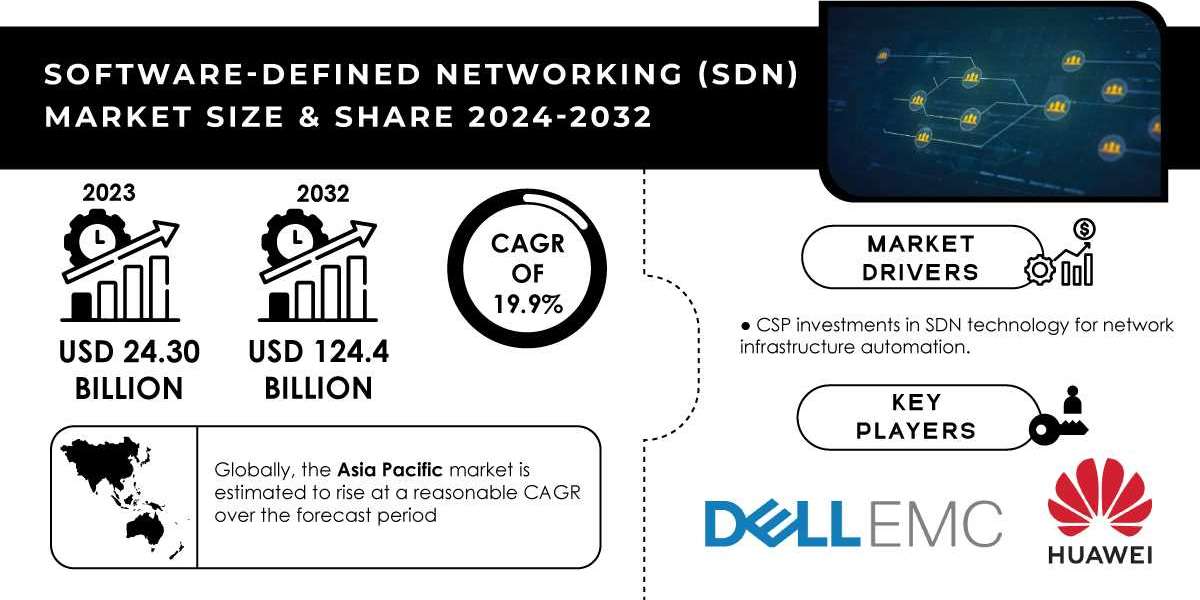Software-Defined Networking 2024
In the rapidly evolving field of networking, Software-Defined Networking (SDN) has emerged as a transformative technology that redefines how networks are managed and optimized. By introducing a separation between the control plane and data plane, SDN offers a more flexible, programmable, and efficient approach to network management. This article delves into the strategic benefits of SDN, its core components, and its future potential in shaping the networking landscape.
What is Software-Defined Networking (SDN)?
Software-Defined Networking (SDN) is an innovative network architecture that separates the control plane, which manages network operations, from the data plane, which forwards data packets. The SDN controller, a centralized software platform, governs the network's control plane, while the data plane consists of network devices that handle packet forwarding based on instructions from the controller. This separation enables greater flexibility, control, and programmability in network management.
Software-Defined Networking Market Size was valued at USD 24.30 Billion in 2023 and is expected to grow to USD 124.4 Billion by 2032 and grow at a CAGR of 19.9% over the forecast period of 2024-2032.
Core Components of SDN
SDN Controller: The SDN controller is the heart of the SDN architecture. It provides a centralized interface for managing network resources, configuring policies, and monitoring network performance. The controller communicates with network devices using protocols such as OpenFlow, allowing it to direct data traffic and enforce network policies.
Data Plane: The data plane comprises network devices like switches and routers that perform the actual data forwarding. These devices are simplified in an SDN environment, focusing primarily on packet transmission based on instructions received from the SDN controller.
SDN Applications: SDN applications are built on top of the SDN controller and provide specific network functionalities such as traffic management, security, and analytics. These applications leverage the controller's centralized control to implement network policies and enhance network performance.
APIs: SDN utilizes APIs to facilitate communication between different components. Southbound APIs, such as OpenFlow, enable the SDN controller to interact with network devices, while northbound APIs allow applications to communicate with the controller and request network resources.
Advantages of SDN
Centralized Network Management: SDN simplifies network management by providing a centralized control plane. Administrators can configure, monitor, and optimize network resources from a single interface, reducing complexity and improving efficiency.
Network Agility and Flexibility: SDN enables dynamic allocation and reconfiguration of network resources based on real-time needs. This flexibility allows organizations to quickly adapt to changing business requirements, deploy new applications, and optimize network performance.
Scalability: SDN supports scalable network architectures by facilitating the easy addition or removal of network devices and resources. Organizations can scale their networks efficiently to accommodate growth and changing demands.
Enhanced Visibility and Control: SDN provides a unified view of the network, including traffic patterns, performance metrics, and device status. This visibility allows administrators to identify and address issues proactively, optimize network performance, and ensure reliable operations.
Cost Efficiency: By leveraging open standards and commodity hardware, SDN reduces the need for expensive proprietary equipment and lowers operational costs. The subscription-based model and reduced capital expenditures contribute to overall cost savings.
Challenges and Considerations
Security Risks: Centralizing network control in SDN introduces potential security risks. A compromised SDN controller could impact the entire network. Implementing strong security measures and ensuring the protection of the controller and communication channels are critical.
Legacy System Integration: Integrating SDN with existing legacy network infrastructure can be challenging. Organizations need to carefully plan the migration process to ensure compatibility and minimize disruptions.
Skill Requirements: SDN introduces new technologies and concepts that require specialized skills and training. Organizations must invest in workforce development to ensure that network administrators can effectively manage and operate SDN environments.
Standardization Issues: While SDN promotes open standards, interoperability between different SDN solutions and vendors can be problematic. Organizations should evaluate the compatibility of SDN components and ensure adherence to industry standards.
The Future of SDN
As technology continues to advance, SDN is expected to play a pivotal role in shaping the future of networking. Emerging trends such as network function virtualization (NFV), edge computing, and artificial intelligence (AI) will complement SDN, providing enhanced capabilities and new opportunities for network innovation. The ongoing evolution of SDN will drive more agile, scalable, and intelligent network infrastructures, meeting the growing demands of modern enterprises and digital transformation.
Contact Us:
Akash Anand – Head of Business Development Strategy
info@snsinsider.com
Phone: +1-415-230-0044 (US) | +91-7798602273 (IND)
About Us
SNS Insider is one of the leading market research and consulting agencies that dominates the market research industry globally. Our company's aim is to give clients the knowledge they require in order to function in changing circumstances. In order to give you current, accurate market data, consumer insights, and opinions so that you can make decisions with confidence, we employ a variety of techniques, including surveys, video talks, and focus groups around the world.
Read Our Other Reports:
Speech-to-text API Market Size













